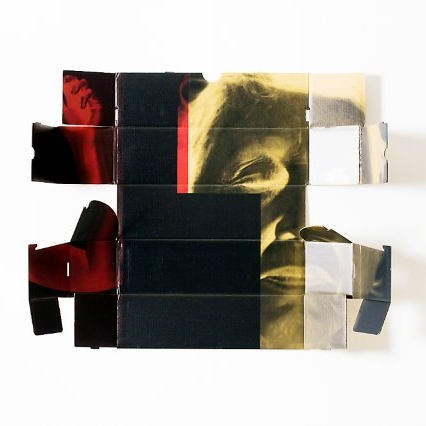
Lifestyle/Community

Photographs question art’s true value
MATTHEW KROUSE
Broomberg and Chanarin’s exhibition marks a decade of their representation by Goodman Gallery. As a pair, they were some of the first artists to be represented by the gallery when owner Liza Essers took over the space in 2008. This is their fifth exhibition for Goodman Gallery.
Their artistic practice involves placing already existent photographs in new contexts. These have often been found in world-famous archives, and by showing them in new ways, the artists highlight the alternative meanings pictures acquire in a 21st-century setting.
In the gallery statement we are told that Broomberg and Chanarin “engage in a forensic and paranoid interrogation of the medium of photography in search of its source code: the cultural, emotional and financial currency of photographs”.
The opening provided a rare opportunity for local art lovers to hear directly from Broomberg and Chanarin, who live in Berlin and London respectively. Given the conceptual basis upon which their artwork has evolved, an enlightening aspect of the discussion was to witness how their work is a deeply personal response to the sense of alienation many feel in a world where surveillance, bullying and online trolling are fuelled by the mass dissemination of images.
It is this that has led to a wide appreciation of the pair’s complex oeuvre. Their work has graced the walls of London’s Tate Modern, the Centre Pompidou in Paris and elsewhere. The two men are professors of artistic photography at Hamburg’s University of Fine Arts.
Chanarin, who spent the first seven years of his life in South Africa, said of the move from printed to digital mass-produced images: “We feel that the landscape is just changing under our feet. What’s disturbing is the way pictures are just fronts for a whole shadow that exists. Imagine that everyone has this aura of data hovering over their heads. Every photograph has that behind it. And it’s very frightening to think about how that is monetised and used, and distributed and exploited. So we are coming into making this work very uncertain as photographers.”
The exhibition itself is divided into two broad techniques of production. Some of the collages are printed onto unfolded, humble cardboard boxes; others are large wall panels printed with a UV printer that “bakes” coloured ink onto flat surfaces.
But the point of the exhibition has been for the two artists, working in different European cities, to select images from their own enormous personal archives of photographs and to play an artistic game known as the Exquisite Corpse, a favourite of the bygone Surrealists.
In the old game each participant drew an image on a piece of paper, which was then folded. Then the next artist began a new drawing that was an extension of something unseen. This technique has served the artists perfectly long distance, using advanced techniques of photographic manipulation, and through modern-day computer connectivity.
Broomberg, who lived in South Africa into adulthood, lamented the loss of traditional values due to mass digital dissemination. “Usually an artwork would be defined by its absolute uniqueness…
“Now we are in an age in which photography as a medium is about mass replication. Normally, some piece of artwork would be defined by how many museums it’s housed in, how many shows it has had, and its whole biography. Now the value is increased by the amount of low-res images that are distributed on social media.”
By playing G-d with their own set of images, the two are questioning the value of data in a formal gallery setting.
- Bandage the Knife not the Wound is on at the Goodman Gallery, 163 Jan Smuts Avenue, Parkwood until May 26.




